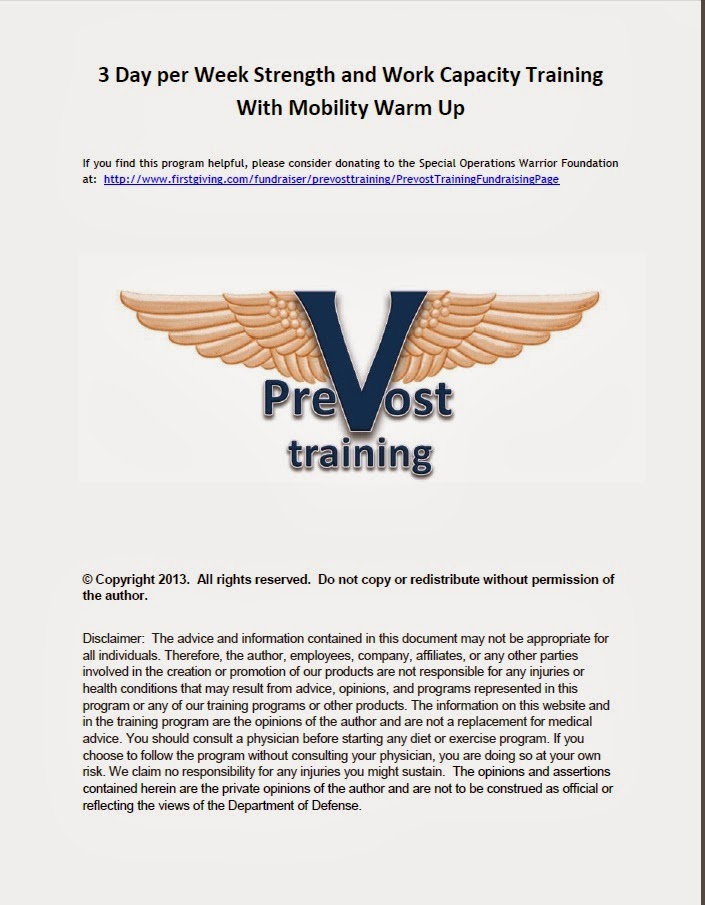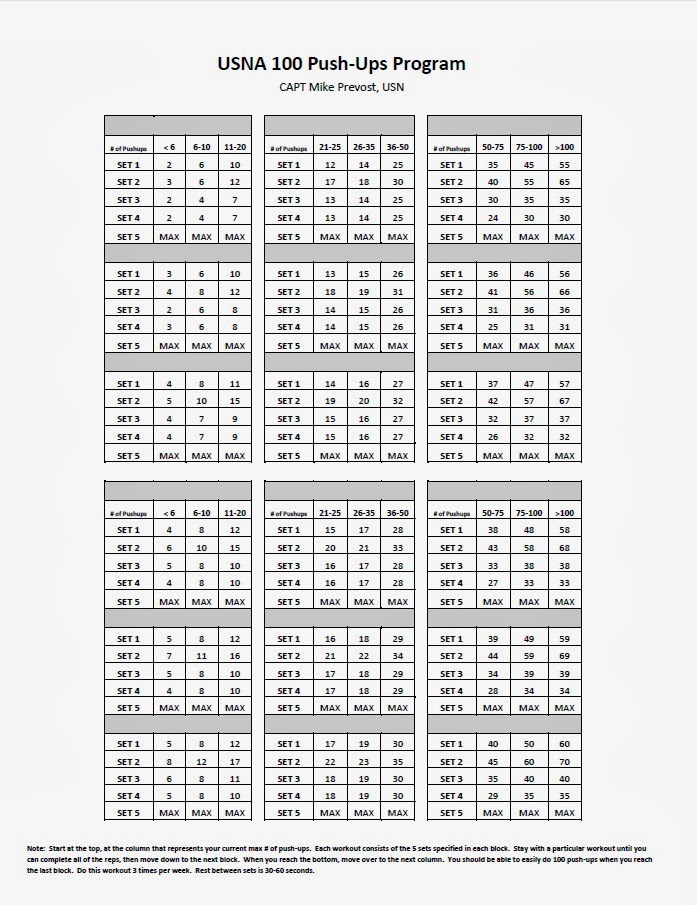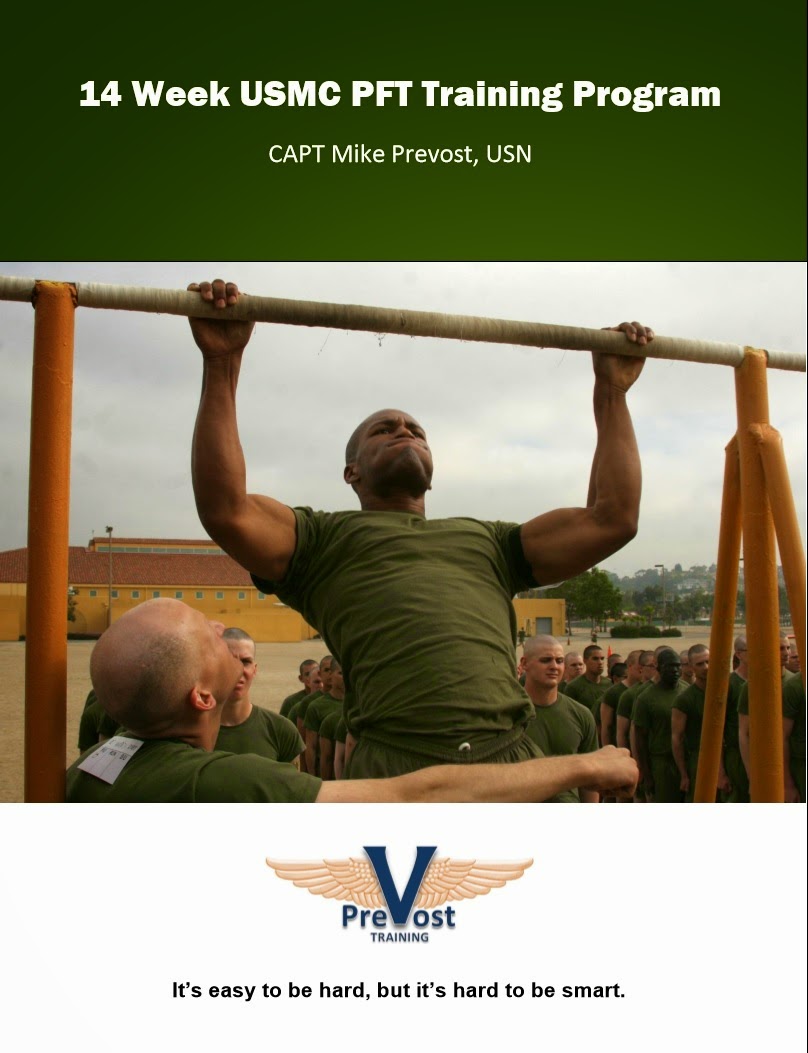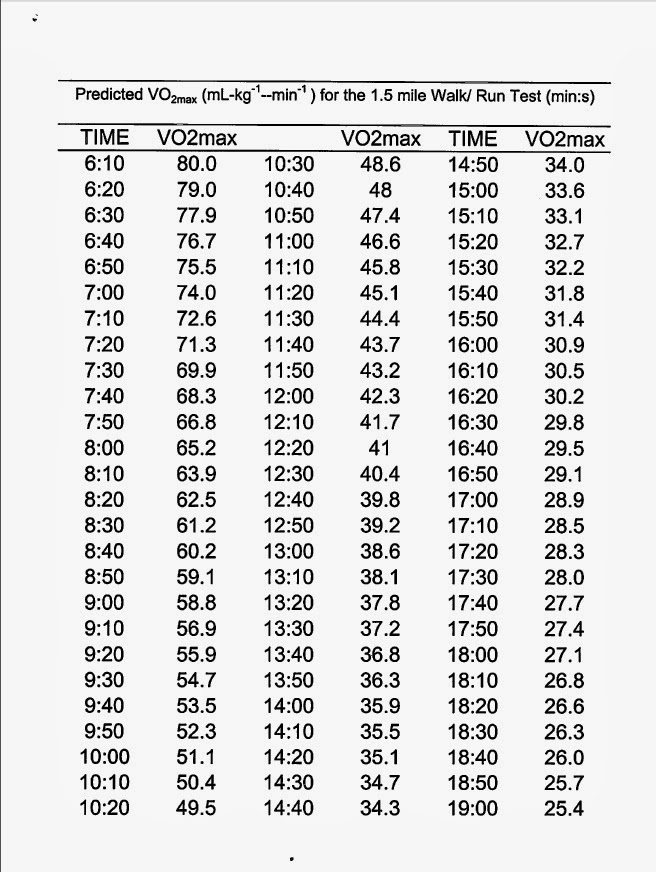--------------------------------------------------------------------------------
Understanding Intervals
Matching training characteristics to physiological changes
Stephen Seiler, PhD
Now we come to a fundamental training question that has interested me for years. Which is "better", Interval Training or Steady State Training? Obviously that is simplistically stated, but I will try to make things more clear as we go. Eight years ago, my master's thesis asked this exact question. One group of rats "volunteered" to run repeated 2 minute high intensity intervals every day (5 days/week), another group ran 60 minutes continuously each day, and a third group served as cage potato controls. We will come back to the results later. I learned from that study and have continued to learn since.
Interval Training Defined
In a dictionary, an interval is probably defined as a period of time or a specified distance. Well, that's true, but for us endurance athletes it means repeated bouts of high intensity exercise with intermittant rest periods. In endurance training circles, no matter what the sport, Interval Training has become a standard practice. Since the 1960's, interval training has come to be thought of as the key to endurance performance success. In some training programs, it accounts for 50-75% of the total training volume. One fellow I know who coaches runners has even written an article espousing "All Intervals, All the Time." After 10 years of research, reading, observing, and training, I think this line of thinking must be evaluated critically, so here goes. I will hit you with information from a lot of different angles, but hopefully what emerges will be a coherent conclusion.
The Physiology of Intermittant Exercise
In exercise physiology research, one of the true "Fathers" of the field is Per Astrand from Sweden. Today, Dr. Astrand is still showing up at International Sports Medicine research meetings at the age of 80 or so. His best known contribution, "Textbook of Work Physiology", co-written with Norwegian Kaare Rodahl and now in its 5th edition or so, remains a "must have" for the student of exercise physiology. In the 60s he performed some simple experiments that still have important training implications regarding the physiological impact of continuous versus intermittant exercise.
In a lab setting, a bicycle ergometer serves as a very useful tool for performing exercise studies. We can precisely control the workload that the cyclist must maintain, and since he/she is sitting still, it is easy to perform an extensive array of physiological measurements, such as heart rate, VO2, blood lactate etc. (I prefer not to dwell on just how extensive!) The following experiments were performed using just such an exercise setup.
One subject was made to accomplish a certain amount of work (force x distance, a quantity that can be precisely measured on the ergometer) in 1 hour. This work could be accomplshed either by a continuous bout of exercise at a power output of 175 watts, or by intermittent exercise at a heavier load, separated by regularly spaced rest intervals. A double power output was chosen for this heavier load. Thus the desired work could be acomplished with 30 minutes of exercise at 350 watts within the span of one hour. At a work load of 175 watts, the subject could easily cycle for one hour continuously. Heart rate was only 134, VO2 was only about 55% of maximal, and blood lactate remained near resting levels. When the subject tried to exercise as long as possible at 350 watts, or double that workload, the exercise could only be maintained for 9 minutes. Heart rate was 190 bpm (maximal), VO2 was at max, and blood lactate had risen to 16.5 mM, an extremely high value indicative of extreme fatigue. If, instead, he exercised at the same 350 watts intermittantly for a duration of between 30 seconds and 3 minutes, always with equal rest, he could perform the desired work within the hour. However, the physiological responses differed tremendously depending on the interval duration.
** Could be sustained for only 9 minutes
## All physiological values represent peak values achieved during exercise
* Rest duration equaled work duration in each condition
INTERPRETATION
There are two major points I want to draw from Dr. Astrand's experiments:
1) Intermittent exercise allows a higher total volume of high intensity work. Performed continuously, the subject could only manage 9 minutes at 350 watts. Performed in 3 minute intervals, he could accumulate over 3 times as much total work (30 minutes, with great effort).
2) When the intervals were 3 minutes in length, the desired work could be accomplished within one hour, at great effort. However, when the work and rest periods were shortened, the physiological strain was dramatically reduced, even though total oxygen uptake during the hour was not markedly reduced. Specifically, if the intervals are less than 2 minutes in length, the physiological workload/stress is severely reduced despite the same total accumulated time (30 minutes here) and same interval intensity (350 watts workload here). If you compare the peak oxygen consumption, HR, and lactic acid concentration achieved during 1 minute intervals with 2 minute intervals in the table above, this difference is easily observed.
Why are the responses so different?
I think the best explanation for the difference was put forward by Astrand. He suggested that during very brief intervals, oxygen bound to myoglobin served as an effective buffer against the accumulation of an oxygen deficit (and lactic acid) during the exercise bout. Therefore after a 30 second bout, myoglobin oxygen stores were repleted during the rest period, and the peak demand on oxygen delivery was not severe. By analogy, the body manages to live expensively, and briefly deplete cash reserves, then always repay the small debt during a subsequent "debt recovery period". No long term debt accumulates. As the exercise bout lengthens, the capacity of the small buffering myoglobin oxygen store is outstripped, lactic acid production and accumulation becomes significant, and the burden of greater oxygen delivery during the work interval falls on the cardiovascular system.
Subsequent experiments by Astrand showed that if you shortened the work period and rest periods to smaller and smaller intervals, it was possible to perform at even higher power outputs without accumulating lactic acid or severely stressing the cardiovascular system.
Conclusions So Far
For a period of intermittent exercise that approximates a max VO2 workload to overload the cardiovascular system effectively, it needs to be of at least 2 minutes duration due to 1) lag time in the cardiovascular response and 2) the oxygen buffering effect of myoglobin
Now, lets go back to my master's thesis. The question I set out to address with that study was this: "What is the impact of interval training and steady state training on the performance of the rat heart?" I wanted to evaluate the heart independent of the muscles, and make direct measurements, so I had to use rats. I bred a group of rats in the laboratory, meaning they were litter-mates and therefore, presumably quite similar genetically (they sure looked the same). After they reached adulthood, I divided them into three groups. One group sat around in cages, ate rat chow and got weighed periodically. A second group was gradually adapted over 4 weeks (several months in rat years) to running on a treadmill until they were running for 60 minutes, 5 days a week at an intensity that was equal to about 75% of VO2 max. The third group was adapted to an interval running program. These guys would run two minute bouts at a speed that required just over 100% of VO2 max, then slow down for two minutes, and so on for 10 bouts (after four weeks of buildup). The total running distance was the same for the two groups, only the intensity differed. To evaluate cardiac performance, I develped a surgical procedure under anesthesia (the rats, not me) that allowed me to directly and constantly measure cardiac output, intraventricular pressure development, heart rate etc., while subjecting the heart to a volume overload with saline infusion. What I found and reported at a meeting of the American College of Sports Medicine was this. In these previously untrained rats, 8 weeks of interval training was superior to 8 weeks of steady state training as an inducer of enhanced maximal cardiac performance. Interval trained hearts achieved higher peak stroke volumes during overload.
OK, So What?
Remember VO2 max? We have established that cardiac performance is a primary determinant of the VO2 max. The results of my thesis study suggested that interval training was the best way to enhance maximal cardiac performance, and therefore, presumably, VO2max. In fact, in a study by a different laboratory, a significant increase in VO2 max occurred in previously untrained rats subjected to 5, very high intensity 1 minute bouts of exercise a day. That's 5 minutes of exercise. This improvement occurred without any change in skeletal muscle oxidative capacity. There are other studies, on humans, that demonstrate the same finding.
Interval training allows us to accumulate a greater volume of stress on the blood pumping capacity of the heart. By using a large muscle mass, we promote maximal stroke volume responses. A high heart rate also is achieved as a function of the intensity. Finally, the periodic elevations and decreases in intensity may create special loading stresses on the heart that are adaptive. For example, during an interval, heart rate climbs high, then at the moment you stop the interval, heart rate immediately starts to drop, but venous return remains high. These exposures to additional ventricular stretch may help trigger ventricular remodeling (bigger ventricle volume). In addition, interval training may create a greater signal for changes in the compliance in the arterial system, but that is just more speculation.
OK then, ALL HARD INTERVALS ALL THE TIME, RIGHT?
NO, keep reading, the plot thickens. From what I have presented so far, and other research, I feel comfortable in saying that a program employing relatively low volume but high intensity endurance type exercise will be very effective in increasing the VO2max of a previously untrained or (substantially detrained) person. For the untrained, interval training is a way of accumulating minutes of exercise at a higher intensity than our skeletal muscles are initially adapted to tolerate. In the untrained, the heart is better conditioned to endurance performance than the skeletal muscles. Therefore it needs a greater overload to adapt maximally. Intermittent high intensity training is also a powerful stimulus for increasing blood volume, which is a critical adaptation that contributes significantly to improved maximal cardiac output and VO2 max.
BUT, Here is the MAJOR PITFALL of THE ALL INTERVAL MENTALITY
The VO2 max is only the 1st wave of change for the endurance athlete. VO2 max plateaus quite early in the career of an adult runner or cyclist who trains hard and regularly (though its exact value will undulate several % from off-season to competitive season). SO, we have to ask "I am no beginner, is hard interval training also the best approach to improving the other components of my performance?"
Improving the endurance capacity of the skeletal muscles
Remember the 2nd Wave of Change ? It is the improvement in lactate threshold, or the percentage of VO2 max that can be maintained without significant lactic acid accumulation. As, I have discussed previously, changes in the lactate threshold occur over a longer time-course than the improvement in maximal oxygen consumption, even if we train regularly. The site of adaptation moves from the cardiovascular system to the skeletal muscles. Additional mitochondria are synthesized, new capillaries are constructed, type II b fibers are converted to more fatigue resistant type II a. These adaptations occur progressively (again with seasonal undulation) over a period of several years. The most powerful stimulus for change in skeletal muscle aerobic capacity is different from the most powerful stimulus for cardiac functional changes! Hard but short interval training fails here. We MUST put in the hours of continuous constant intensity exercise to maximize these adaptations! This will range from steady state efforts at 65-75% of VO2max lasting 45 to 120 minutes to repeated "Anaerobic Threshold work" at 80-90% of VO2 max for 15 to 30 minutes.
Give Me More Evidence
Ok, you are one of these guys that likes to get in your boat or on your rowing machine every workout and hammer away for 500 to 2000 meters, then stop in the onrushing storm of lactic acid agony, only to repeat the process several more times after a few minutes rest. The workout leaves you exhausted, dry mouthed, and wobbly legged. Surely it will make you faster. You say, "Why bother training at less than race speed? If you want to race fast, you must train fast, always". Runners, Cyclists, swimmers, the same mentality can be found among you. Coming from a more speed and power oriented mentality, this was also my training inclination, for several years when I entered into endurance training. Heck, I was just making my interval trained rats do my workout! But, after reaching a plateau pretty quickly, I started looking, experimenting, and learning.
The German Rowers ease off the throttle
A few years ago, I came across extensive data collected on German national team rowers by their team of physiologists. They were regularly evaluated with blood tests during and after workouts. After accumulating a lot of measurements over a training year, some interesting results were reported. Eighty percent of the training volume among elite German rowers was performed at a lactate concentration under 2.0 mM!( a value at or only slightly above resting levels) Only one or two percent of the training volume was at "RACE PACE". (Remember in competitive rowing, the events last 5.5 to 8 minutes, so race pace is above VO2 max.) From what I knew of their training back in the 50s and 60s, I had assumed that the Germans (and the Soviets) trained at brutal intensities, and those who didn't survive were replaced. Had the Germans become wimps? Well, actually at the exact time of these tests in the late 80s , they were the dominant world power in rowing with multiple world champions ranging across the boat class spectrum. So, whatever they were doing was working.
Why?
Why had German rowers, (and the Italians, another world power) adopted this training philosophy. Well, I dug up something interesting on that issue written way back in 1968 in a major rowing publication. Back in the early and mid 60s the German's training approach had indeed been much different, with a greater emphasis on high intensity intervals. What they found was that, to a great extent they did reach high performance levels with this training program. But, they were not seeing progressive improvement from year to year among their elite athletes. Every year they came up to the same level, fell back down in the off season, and repeated the process the next season. Then they changed the composition of the training to a higher volume, lower intensity (fewer killer intervals at max speed) and the long term progress began to occur. This makes sense when we consider the "Waves of Change".
Another reason relates to a different component of the physiological impact of high intensity intervals. Long term observation of elite German athletes has demonstrated (at least to them) that the body's tolerance for exposure to very high lactate concentrations and the extreme sympathetic stress associated with this type of training is quite limited. After a severe effort, immune function and other measures are disturbed for days. After a major international race, the disturbance can extend for weeks. Overtraining and tissue injury is much more likely during periods of extreme intensity. If training is interrupted due to injury or staleness, then no progress is made. We must be careful as coaches and athletes to apply the highest intensity work in careful, infrequent doses.
The Kenyens
There has been a tremendous amount of press in the running world about the recent dominance demonstrated by east Africans, particularly the Kenyans. Not surprisingly, some have suggested that these runners are "genetically different" or train in "secret ways" that make them invincible in world distance running.
Well the Kenyans ARE setting world records right and left and kicking the rest of the running world's proverbial butt (Number 1, 2, 3, 4, 5 in 1996 Boston marathon). But do they have any physiological or training secrets? Well, to address that question, Dr. Bengt Saltin, formerly at the Karolinska Institute in Sweden, and now at the Copenhagen Muscle Research Center (Denmark), performed some interesting studies and published them in 1995. He measured maximal oxygen consumption, lactate threshold, economy, fiber type etc. in the top 12 Swedish distance runners. Then he went to Kenya and did the same thing among some of their best runners (with the considerable help of the famous runner of the 60s, Kipchoge Keino). On average, Kenyan and Swedish runners had high and similar VO2 max values (The very best Kenyans were somewhat higher than the very best Swedes, though). However, the really noticeable differences between the dominant Kenyans and the "also ran" Swedes was in their very low lactate and ammonia accumulation at high running speeds, and their excellent running economy. Remember the 2nd and 3rd Wave of Change?
Do the Kenyans do intervals?
Almost never. They do train intensely and often though. Here is what Saltin reported among a group of very successful younger runners. The runners train twice a day, morning and afternoon. 90% of the morning runs are through mountains and villages for 8-15 km (5-10 miles) at a moderate intensity (70 to 79% of VO2 max.) The other 10% are at a lower intensity. Then in the afternoon, they run again. This time the distance is only 3.5 to 5 miles, but 80% of these runs are at close to 90% of VO2 max. The other 20% are at very low intensity. If they feel tired they don't run as hard. This doesn't sound very complicated. Out of twelve workouts in a week, only one is an interval session, at 96% of VO2 max. A recent article about the great marathoner Cosmo Ndeti confirms this training strategy even among the older champion runners. The Kenyans definitely train hard, but they never do interval training at paces above VO2 max. As they improve, they run longer at the same relative intensity.
What about us Older Guys?
One of the goals of the Masters Aging and Rowing Study has been to evaluate how older elite athletes train. Fortunately I have received extensive training data from some excellent masters rowers, including national rowing champions and ergometer age group world record holders. The pattern I have observed is this: Most masters athletes don't train twice a day, not even quite every day. That's what having a full time job does for you, (and perhaps the wisdom that allows the mind to listen to the body when it says "I need a day off".) But, the best rowers still put in a lot of hours doing moderate to hard steady state rows on the water or on the erg. "Hours of Power" I call them. One ergometer rower who briefly held the world record in the men's 50+ age group reported 140 rows of one hour continuous on the ergometer in the year prior to his world record. Assuming race pace in his specialty is at 102 to 105% of VO2 max, the intensity of these rows was at about 73-75% of his 2500 meter race power, based on the meters rowed each session. This pace approximates 75-80% of VO2 max. Almost no training at higher intensities was performed until the weeks prior to a series of Spring races. Then he proceeded to break 7:56 for 2500 meters 4 times in one month, culminating with a 7:52 world best! He built his performance engine with long steady state training, then he unleashed its impressive capacity in the brutal 8 minute races. It is also worth pointing out that his performances have steadily improved over about 5 years, despite being "middle aged". (He had discovered rowing in his 40s)
OK, No Intervals Any of the Time?
Not exactly. Here is what I think, based on the data and my own experience. 1) Interval training at above 100% VO2 max will not provide additional stimulus for improving maximal aerobic capacity, or lactate threshold, and may hurt.
There is substantial research to indicate that there is little or no difference in the impact on maximal oxygen consumption among exercise intensities ranging from 80 to 100% of VO2 max. At intensities above 100%, the stimulus for improving maximal oxygen consumption is actually reduced, due to dramatically decreased training volume, and the inhibiting effect of lactic acidosis on cellular oxygen utilization.
During work within the 75-100% intensity range, improved exercise tolerance should be compensated for by increasing distance or time, not intensity. This increased tolerance for exercise at a given submaximal intensity is indicative of skeletal muscle adaptations.
2) Aerobic interval training is definitely effective, but the emphasis should be on interval durations of from 10 to 20 minutes if your event duration is greater than 4 minutes. Intervals of 4 to 8 minute duration are going to be at intensities of 85 to 100% of VO2 max. This intensity and duration is optimal for maximizing/maintaining cardiovascular power. However, remember that this adaptation plateaus "early". Your incorporation of 4-8 minute intervals probably needn't ever exceed once every 8 days. Consequently, the majority of your training time should be aimed at optimizing the signal for other adaptations. Longer intervals of 10 to 20 minute duration will be at 75 to 85% depending on your ability and training status, and are a very useful method for developing skeletal muscle endurance, "the Second Wave of Change". With both intervals the duration will generally force you into the right intensity range, if you are giving a good effort. The intermittent nature will help you to accumulate minutes of high quality work. I think 24 to 32 minutes of accumulated interval time is appropriate for most of us when performing the 4 to 8 minute intervals There will be little or no benefit from longer sessions. For the longer, lower intensity intervals I think 40 to 60 minutes is ideal. Twenty to 40 minutes will probably do most of the job. This means that on most of those busy days when you only have 30 minutes to train, a brief warm-up and one hard 20 minute steady state interval (temp run, AT effort, etc.) is more beneficial than resorting to a series of very short intervals. Rest intervals should not need to be very long, since lactate accumulation is not severe. For example, if you are attempting to do 5 times 5 minutes, a rest interval of at least 2 minutes but no more than 4 minutes should be used. For 20 minute intervals, rest will only be 5-6 minutes. If the intensity is appropriate, for a given interval session, you should be able to complete all the intervals at the same speed, albeit with increasing effort. Basically the long term goal is for the interval intensity to slowly become a steady state pace. In their excellent book "Training Distance Runners", David Martin (exercise physiologist) and Peter Coe (father and coach of world record holder Sebastion Coe) talk about interval training. They suggest that you should even be able to increase the speed of the last one or two intervals (with a lot of effort). This will indicate that you have not accumulated excessive lactic acid in the training session. If you are blowing out the first one and find yourself fading on subsequent intervals or cutting your workout short, then you are clearly not performing at the right intensity. More importantly you are NOT optimizing the training stimulus! You suffer, but the value of the session is compromised in two ways. First, the high lactate levels that develop due to excessive intensity actually inhibits oxygen utilization and decrease fatty acid utilization by the mitochondria. Second, the prematurely abrupted workout leaves you exhausted, but your muscles under stimulated.
What is your favorite workout?
In the last two years, I found that a workout consisting of three 20 minute bouts at "friendly race pace" or just above my lactate threshold (my high lactate steady state), was my bread and butter workout in rowing. These sessions were performed once a week, always in the company of other single scullers. The duration keeps the intensity from getting too high. The competition with my partners kept it from getting too low! Other workouts were steady state rows at lower intensity for 60 to 90 minutes, with technical excellence (efficiency) being a primary objective along with aerobic conditioning. This was a significant change from a training program that revolved around 1, 2 and 4 minute interval sessions as the "Killer workout" each week. We did some of these short intervals also, but only as the race season approached and even then, less frequently than we had in previous years. All of my rowing partners found this training program to be excellent. We stayed healthy. We stayed motivated. And we got faster!
Where does my heart rate monitor fit into all this?
I would recommend using the heart rate reserve formula. I discuss it here. This will allow you to come close to establishing a specific heart rate for the percentage VO2 values I am discussing here. Of course the heart rate tachometer only goes to 100%. That is max heart rate and will correspond to 100% of VO2 max. In general heart rate does not reflect work intensity adequately for high intensity intervals (30 seconds to 3 minutes)
Is there ever a place for the really short, fast stuff ?
Yes, if your event duration is in the 3-4 minute range (1000 meters for rowers), then ANAEROBIC CAPACITY will play a contributing role. Even in these short events, aerobic endurance is still the foundation of success, but your ability to tolerate very high lactic acid levels and maintain good technique (rowers, swimmers) is critical over the concluding moments of the race. In this case we employ Anaerobic Intervals Here the method and goal is very different, and this must be recognized. In these sprint intervals, 30 seconds to 2 minutes in length, 1) a severe accumulation of lactic acid is expected. Also, forget your heart rate monitors. What they read means nothing under these conditions. Rest intervals may be up to twice as long as work intervals. Intensity will be at 105 to 120% of VO2 max pace. Lactic acid will not completely eliminated during the rest. So, each interval will start at a higher blood lactate. The goal is to sustain speed as best as possible at higher levels of lactate. Here the total work time may be as little as 6 minutes to as much as 16 minutes. The value of these workouts diminishes once you can no longer maintain adequate technique.
The limited potential for amplification of lactate accumulation capacity and tolerance comes at a high price within the overall endurance athlete's training program (remember the German data). These adaptations are also achieved much faster than aerobic adaptations, so sprint training need not be implemented before 4-6 weeks out from a specific competition. It doesn't take too many brutal sprint sessions to have you or your athletes broken down at the side of the road/river/pool. For most endurance athletes, this mode of training should not account for more than 1 of every 10 workouts. More will put you at risk of becoming physically stale and psychologically brittle, and detract from the volume of training dedicated to aerobic adaptations.
SUMMARY
In past articles in this section, I have discussed the major components of endurance performance. They are maximal oxygen consumption, lactate threshold, and efficiency. A friend of mine has added an article on short term muscular power (Anaerobic capacity). This last component plays a negligible role in long events but becomes increasingly important as the race distance decreases below 15 minutes. Anaerobic energy sources may account for 20% of the energy output in a 5-7 minute race. In a 2 minute race, about 40 % of total energy is being supplied anaerobically.
I have also discussed the time course of change of these components in the endurance athlete who continues training for several years. Now, in this article I hope I have added to this foundation by discussing the relationship between training characteristics and the impact on those components. Understanding the underlying physiology now helps us to put the training program together. Short, very high intensity interval training has only a small niche in the endurance athlete's training program. It feels like a race. It hurts like heck. But, it has limited value in building the performance engine. I am convinced that our focus must be on longer bouts of exercise as the foundation of our training program. This is easily understood by you marathoners, but may be surprising news to you 1000 meter rowers, middle distance runners and, pursuit cyclists. The bigger take home message is this: Even for you "power-endurance athletes", it is the consistency and volume of exercise at 70% to 90% of VO2max in your training program that is going to have the single biggest long term impact on your progress, not the number of workouts in which you achieve complete rigor mortis and cotton mouth!.
(This already long article will be expanded/modified as the data and my experience warrants.)
--------------------------------------------------------------------------------
Copyright � 1996 Stephen Seiler All Rights Reserved
Source :-















